08/05/2023

Chile is well known for its geographical diversity, occupying a long, narrow strip of land wedged between the Andes and the Pacific Ocean. The landscape, cultures and climate change dramatically along the length of the South American country. Chile's cities and towns are equally diverse. Some gain their charm from the beauty of the surrounding landscape. Others are the starting point for one-off adventures. Famous cities such as Valparaíso and the capital Santiago get the lion's share of the attention, but small towns, picturesque villages and remote suburbs give Chile its unique character.
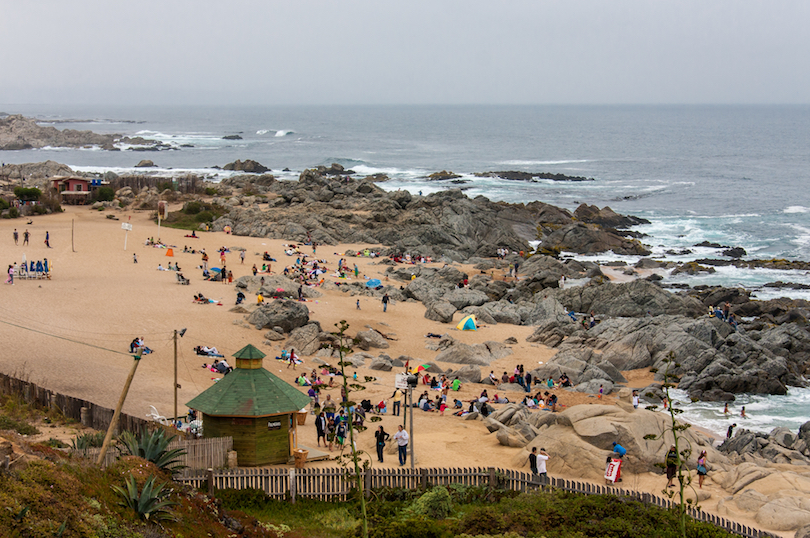
For many fans of the famous poet Pablo Neruda, there is no better place in Chile than the coastal town of Isla Negra. When he was not travelling or living in exile, Neruda spent 40 years of his life at Casa de Isla Negra, a house of wood and stone on the beach south of Valparaíso. The house now serves as a museum where you can get up close and personal with Neruda's collection, which ranges from boat shapes to butterflies to seashells and mussels. After your visit, the small beach on the shore offers a picturesque spot for a picnic.
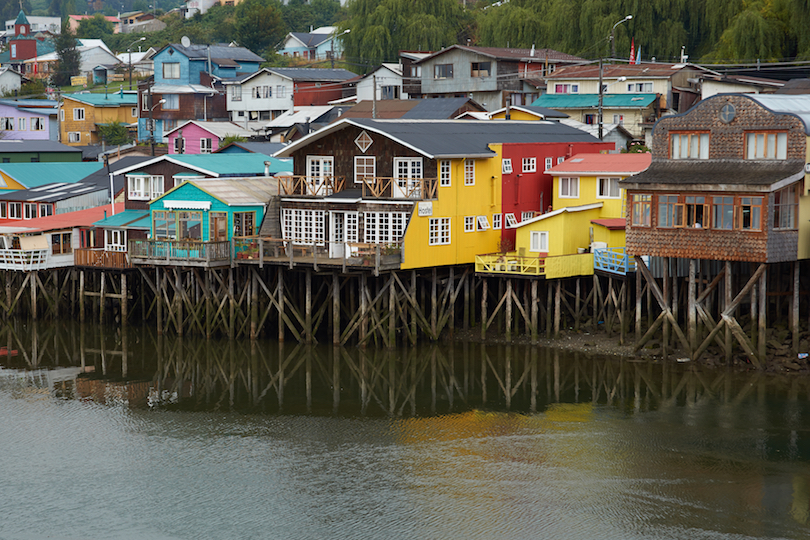
Castro, the capital of Chiloe Island in southern Chile, is the third oldest city in the country. Founded in 1567, the small town still feels lost in time. Perched on a promontory on the eastern coast of the island, Castro's landmarks are the 'palafitos', the colourfully painted pile dwellings that dot the city's coastline. The wooden churches, built by Jesuit missionaries in the 17th century, are the island's cultural landmarks. Tourists often choose Castro as a base from which to discover these architectural gems. The Iglesia de San Francisco in the city offers a modern take on traditional architecture.
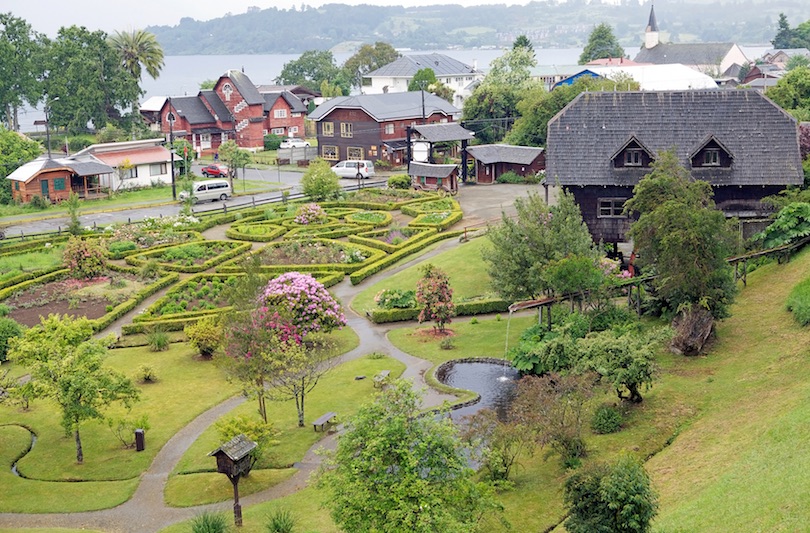
Located on the shore of Lago Llanquihue, Frutillar presents a breathtaking view of the snowcapped Osorno volcano rising over Chile’s second-largest lake. With its German-influenced architecture, the lakeside village is a picturesque spot too. The well-regarded Museo Colonial Alemán features artifacts and full-scale structures used by the town’s original German settlers. The adjacent gardens offer a panoramic vista of the lake below. An attractive pier ornamented by a charming gazebo draws visitors to the Playa Frutillar, a popular beach known for its dark-colored sand.
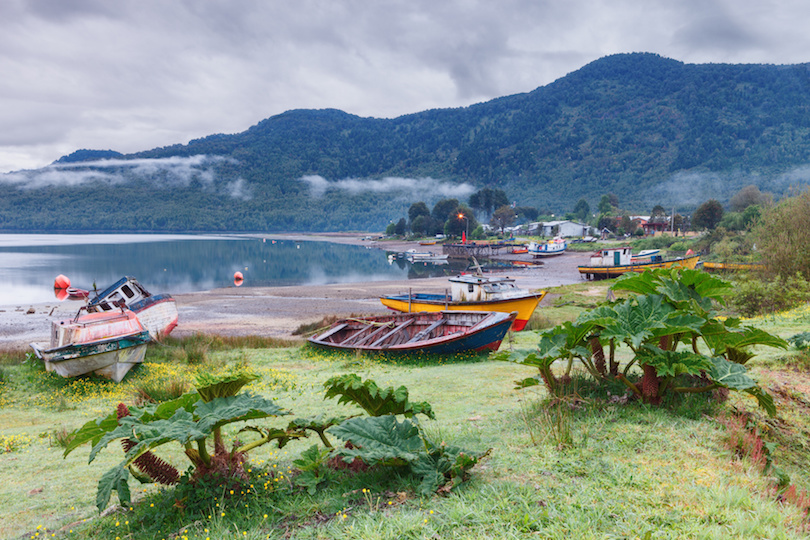
A sleepy hamlet with less than 1,000 residents, Puyuhuapi is one of the oldest villages in Chile’s northern Patagonia. Like other towns in the region, it was founded by German immigrants after World War I. Situated along the forested shores of the icy Glacier Sound, Puyuhuapi’s standout attractions are its natural hot springs. A visit to the luxury Termas de Puyuhuapi lets you soak lakeside in outdoor pools fed by the thermal waters. Puyuhuapi also makes for a scenic stopover for visits to the nearby Quelat National Park.
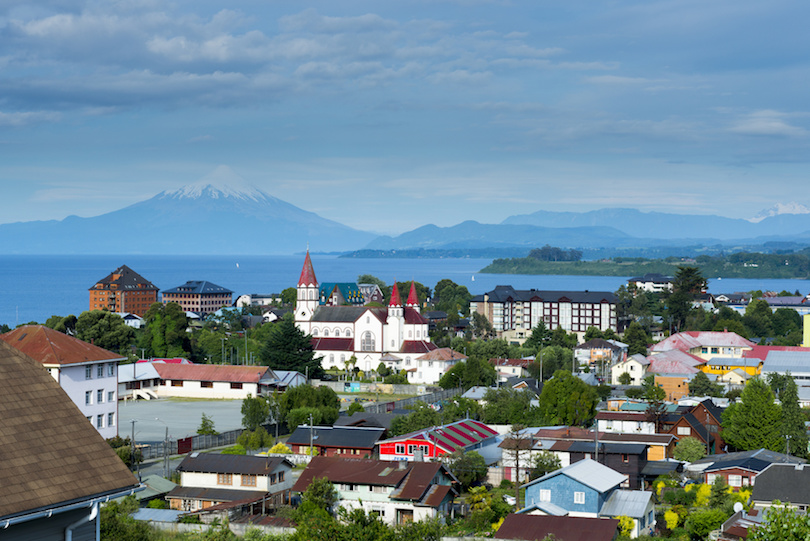
One of the most picturesque of Lago Llanquihue’s lakeside villages, Puerto Varas is a well-developed town where streets are wide, gardens are filled with roses and historic homes are carefully maintained. Packed with hotels, bars, restaurants and even a casino, Puerto Varas nevertheless retains its old-world charm. It’s a comfortable and convenient spot from which to plan adventures into the great outdoors. Outfitters are readily available to equip you for kayaking, canyoning, fishing and hiking adventures.
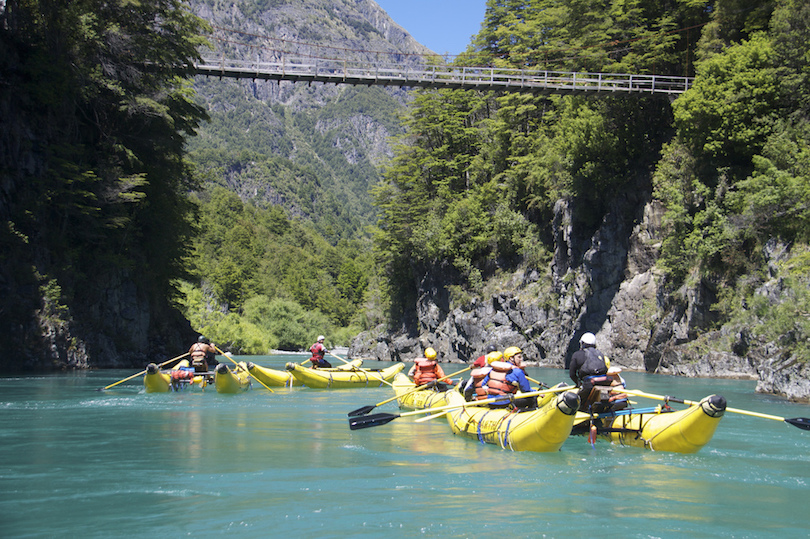
Attracting white-water rafting and kayaking enthusiasts from around the globe, Futaleufu is best known for the class V rapids of its namesake river. Increasingly, the picturesque beauty of Northern Patagonia town is making Futaleufu a travel destination in its own right too. Positioned at the junction of two majestic rivers, the small village is nestled against hills covered in lush forests. The region is perfect for a broad array of outdoor activities ranging from hiking and biking to fly fishing and canyoning.
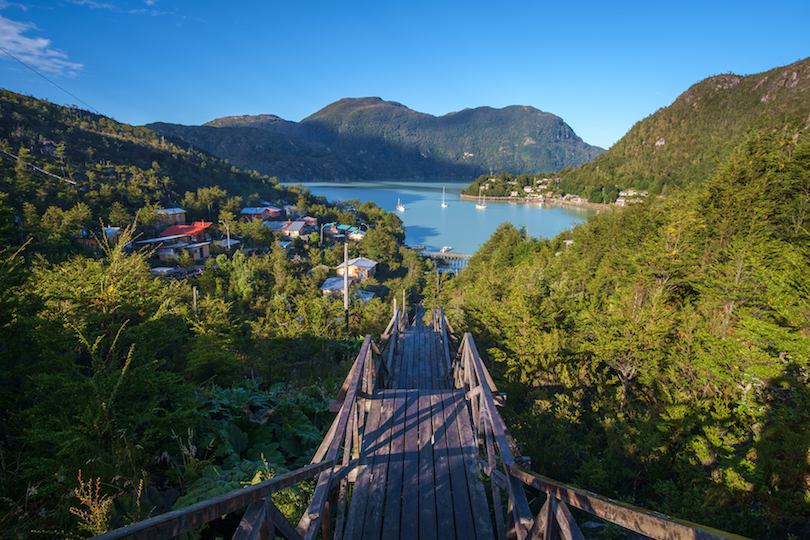
A rugged coastal village in southern Chile, Caleta Tortel is a town without streets. Located at the mouth of the Baker River between two mammoth ice fields, Tortel was built to accommodate changing water levels and variable weather. Stilt houses are linked to each other via a network of elevated wooden walkways, boardwalks and stairs. Most are constructed with cypress, the wood that brought the timber industry to the region in 1955. Caleta Tortel offers a uniquely scenic stopover point for travelers exploring Western Patagonia.
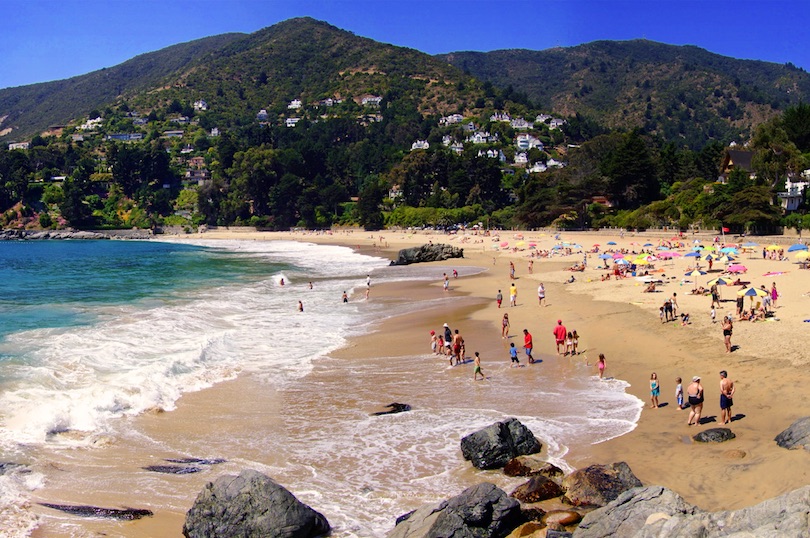
A seaside resort located around an hour’s drive north of Valparaíso, Zapallar is the destination of choice in Chile for luxury beach vacations. In 1893, a wealthy Chilean aristocrat named Olegario Ovalle purchased the area to create the most exclusive beach resort in the country. Perched on the steep hills surrounding a crescent-shaped cove are an impressive assortment of European-style villas and mansions. The beach itself is a picture of golden sand, crystal-clear water and tumbling rock formations. A hilltop park called the Plaza del Mar Bravo offers stunning ocean views.
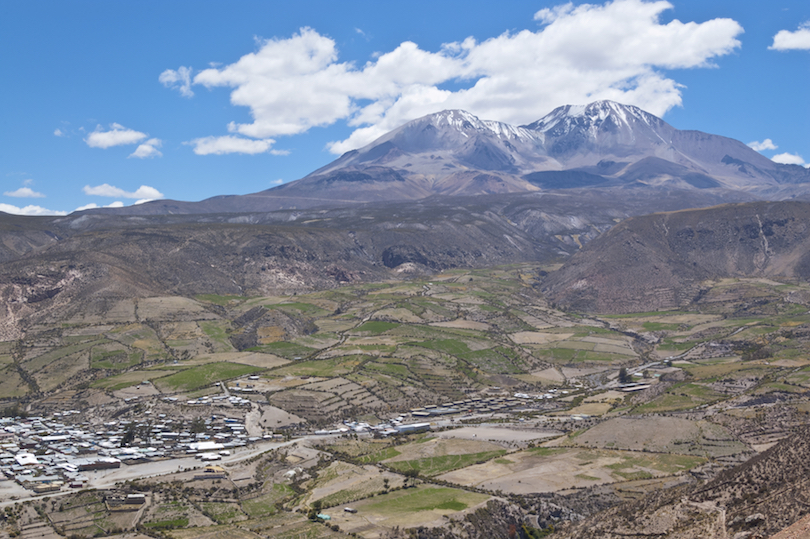
One of the northernmost towns in Chile, Putre is a popular stopover spot for visits to the high-altitude Lauca National Park. There’s plenty to do and see in Putre while you acclimatize to the oxygen-thin air. Founded in 1580, Putre was built by the Spanish as a settlement area for the indigenous population. From the colonial church to the nearby cave paintings, elements from both cultures remain on view. With the Taapaca volcano in the background and herds of llamas, sheep and cattle scattered across the foreground, views from Putre are truly unique.
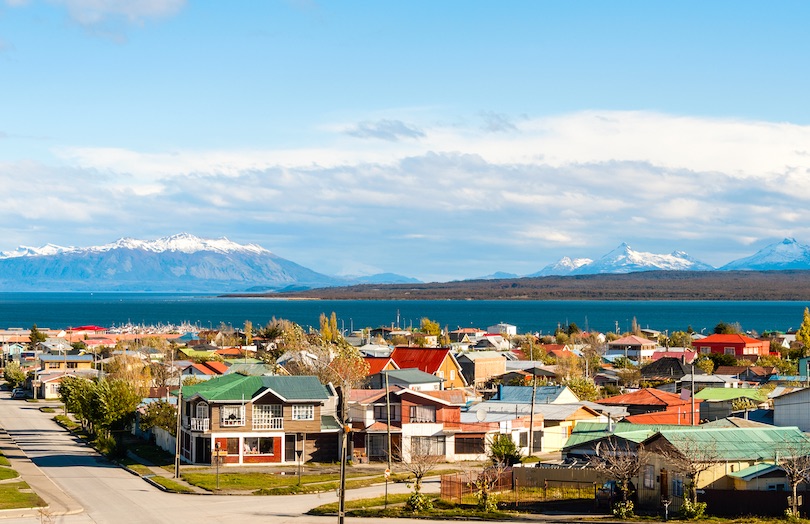
Located in Chile’s extreme south, Puerto Natales is the starting point for treks through Torres del Paine National Park and boating excursions to the Patagonian fjords. Boasting nearly 20,000 inhabitants, it’s an impressively size town for such a remote location. In addition to gear shops selling everything you need for outdoor expeditions, you’ll find an array of tasty eateries, bars and boutique hotels. Nearly every place you visit offers views of snow-capped peaks rising up out the blue expanse of the Seno Ùltima Esperanza.
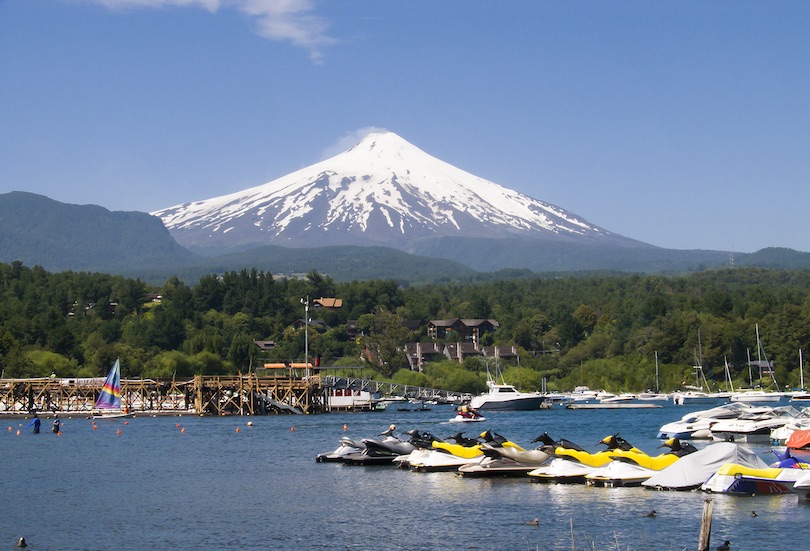
Of the many towns and villages in Chile’s Lake District, few are as popular as pretty Pucon. Situated on Lake Villarrica, it offers a stunning view of the active volcano Villarrica in the distance. Pucon is a well-established hub for outdoor activities in every season. Opportunities for mountain climbing, water skiing, backpacking and kayaking abound. Pucon is a great for relaxation too. Black-sand beaches line the shoreline and the town is packed with restaurants, bars and hotels. Thanks to the amount of volcanic activity in the region, there’s an abundance of hot springs around the city to enjoy as well.
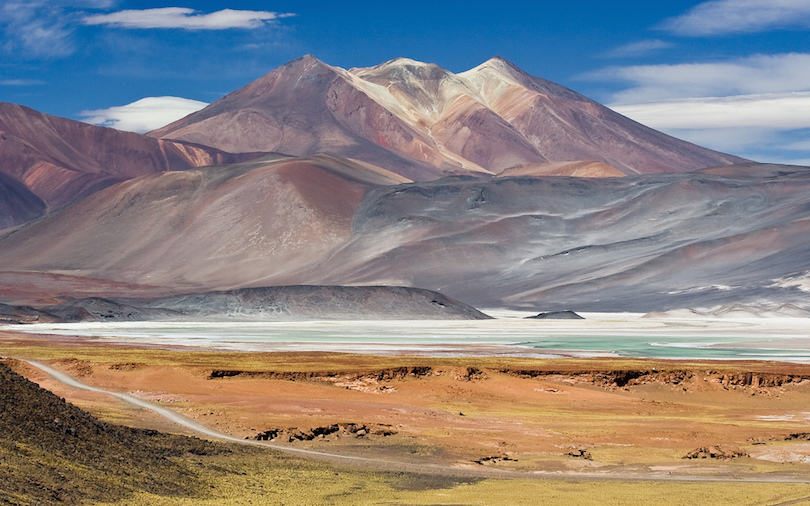
San Pedro de Atacama is a centuries-old town that grew up around an oasis on an arid plateau high in the Andes mountains of northeast Chile. The nearby archeological site of Tulor features artifacts of the Atacama culture that date back to 800 B.C. Basketworks and pottery made by modern-day Atacameños are sold in town. Otherworldly landscapes make a visit to this ancient outpost a memorable experience. The terrain around San Pedro includes deserts, salt flats, steaming geysers, rock formations and the active Licancabur volcano.
Author: VCL team
08/05/2023